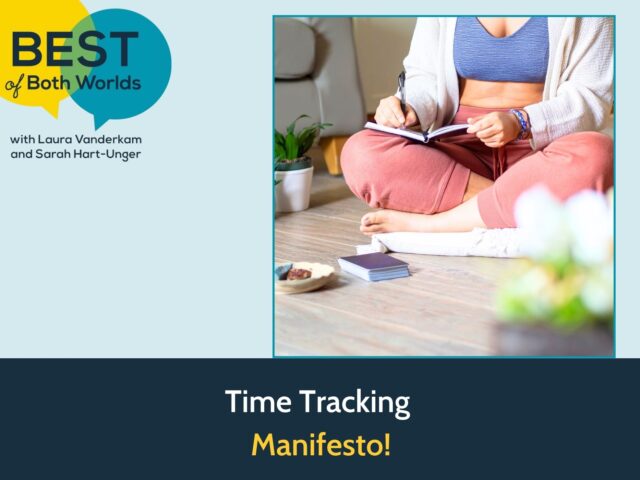If you want to spend your time better, it helps to know where the time is going now. After all, if you don’t know where the time is going now, how do you know if you’re changing the right thing? As with all decisions, it helps to work from good data. The best way to get that data is to track your time.
Today’s episode of Best of Both Worlds is all about time tracking. I’ve been tracking my time for 10.5 years now on weekly spreadsheets. No one else needs to do that! But I do find it helpful. In this episode, Sarah reports on her recent experience of using Toggl, an app which has helped her successfully track her time for several weeks. We discuss the mechanics of tracking, some frequently asked questions, what people tend to find when they track 168 hours (a week), and the upsides of tracking. It’s not about playing gotcha — it’s about making time for fun, and preserving memories. I love looking back at old time spreadsheets!
In the Q&A we address a question I get surprisingly often. People with very flexible work track their time and discover their total hours are on the lower side. If they want to add a few hours to avoid feeling rushed, or because they’re feeling more ambitious, what is the best way to do that?
Please give the episode a listen! As always, we welcome ratings and reviews. We had an excellent Zoom meet-up of the Best of Both Worlds Patreon community yesterday. You can see more about the community here.

Such as fun and inspiring episode! Laura, I’m curious, what do you do with your 10 years of time tracking sheets? Do you have a binder, box? How do you do it!
@Annie – good question! The spreadsheets are on my computer so they’re saved electronically. I also archive them (I email them to an old email address – I realize now something like Google’s options would work better but those weren’t in wide use when I started in 2015!). I only started printing them in the last few years – there’s just a stack in my office. I probably should put them in a nice box or binder.